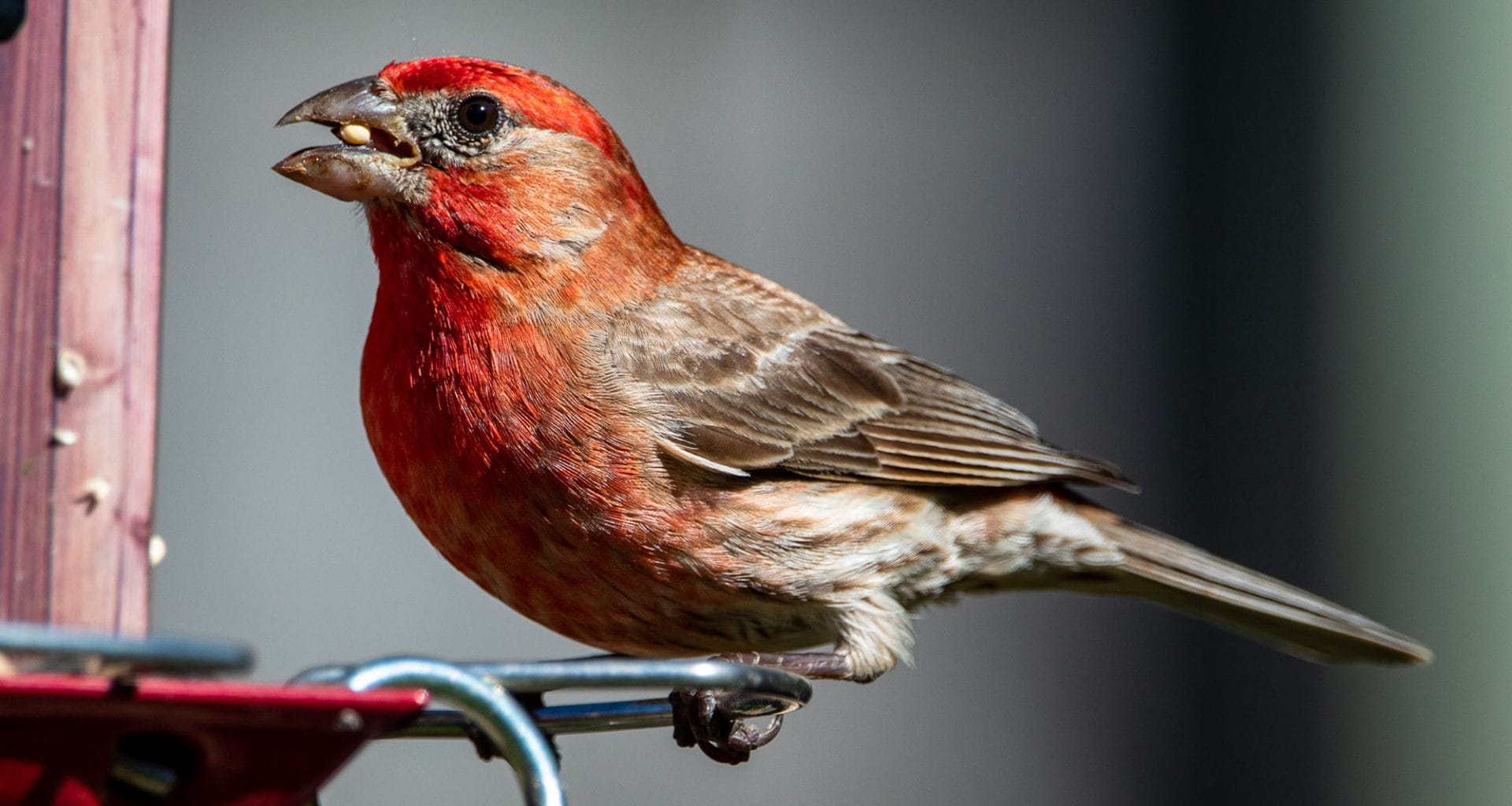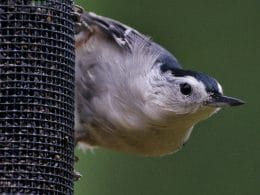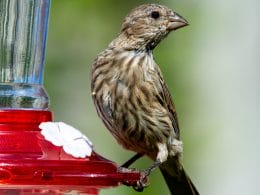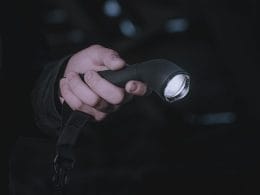Tube feeders are considered one of the easiest types of feeders to set up. Available in all shapes and sizes, there’s a tube feeder for every bird out there. So what is the best bird seed for tube feeders?
Figuring out which type of seed is best for the tube feeder you got is the real challenge. Filling your tube feeders with a mix of seeds may sound like an easy solution, but if the seeds aren’t suitable for the type of feeder you have, they may fall out, or may not dispense properly.
To save you the hassle of trial and error, we compiled a list of some of the best bird seeds for tube feeders on the market, so stick around.
Choosing the Best Bird Seed for Tube Feeders
Tube feeders come in all shapes and sizes to accommodate different types of seeds. Deciding on which tube feeder and seed variety to go for depends mainly on the birds that frequent your backyard the most. Below are some of the most popular bird seed varieties for tuber feeders. We think these are the best bird seed for tube feeders because most species love them.
1. Nyjer Seeds
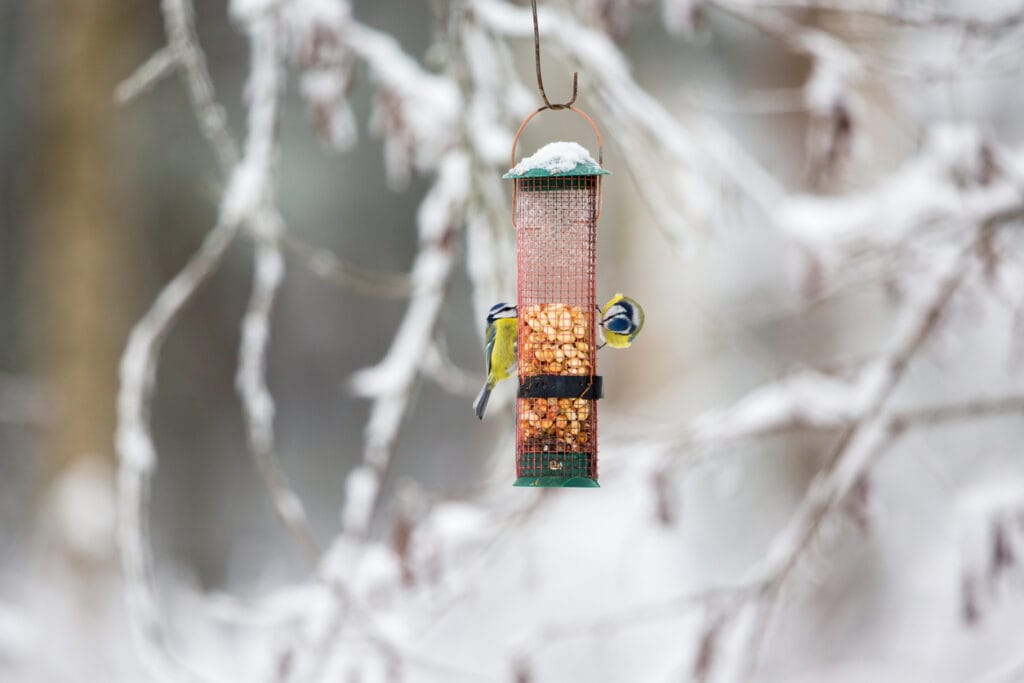
Also known as niger or thistle seeds, these small, black oilseeds attract a variety of birds to feed on them. Goldfinches are quite fond of nyjer seeds.
These seeds pack a lot of nutrition for birds, which makes them a popular option to feed birds in the winter to keep them full and warm.
Nyjer seeds contain the following nutrients:
- Fat
- Protein
- Fiber
- Sugar
Aside from goldfinches, there are other species that favor nyjer seeds, such as:
- Purple finches
- House finches
- Chickadees
- Mourning doves
- Pine Siskin
- Song sparrows
- Common redpolls
- Lesser goldfinches
However, other species cannot munch on these tiny seeds and would look for something bigger. This includes cardinals and grosbeaks.
Nyjer seeds are best used with a small mesh tube feeder or one with small or adjustable ports. They’re best used with tube feeders that prevent spills to avoid wasting precious seeds. You can also find specialty-made tube feeders for nyjer seeds.
2. Sunflower Seeds
This category can be split into three sub-categories: black-oil sunflower seeds, striped sunflower seeds, and hulled seeds (AKA kernels).
A. Black-Oil Sunflower Seeds
This seed variety is favored by a wide range of birds. The thin shells are easy to break and have large, thick seeds that contain high nutritional value for our feathery friends.
Black-oil sunflower seeds attract a lot of breeds, including:
- Common Grackles
- House Finches
- Pine Siskins
- Northern Cardinals
- Gray Catbirds
- Chickadees
- Jays
- Nuthatches
These seeds are best served in a tube feeder with adjustable feeding ports to fit the seed size and not get stuck.
B. Striped Sunflower Seeds
Known for their unique black-and-white striped shells, these seeds are a little tougher to crack than black-oil sunflower seeds. This makes them suitable for larger birds that have strong bills, such as cardinals and titmice, but less convenient for chickadees or goldfinches.
Both types of sunflower seeds aren’t eaten with the shell, this means that you should opt for a tube feeder with a tray to catch the shells.
C. Hulled Sunflower Seeds
Although they’re a bit pricier than in their shelled form, hulled seeds or sunflower hearts are great for all types of birds.
Author Note: Since there’s no hard shell to crack, you’ll be providing our feathery fellows with a nutritious, easy-to-attain meal, as well as avoiding the mess that shell casings cause.
Because of their small size, you’ll need tube feeders with small or adjustable ports, or small meshed tubes.
All three types provide the following nutritional value:
- Protein
- Fiber
- Calcium
- Vitamins E and B-complex
- Potassium
- Iron
3. Safflower Seeds
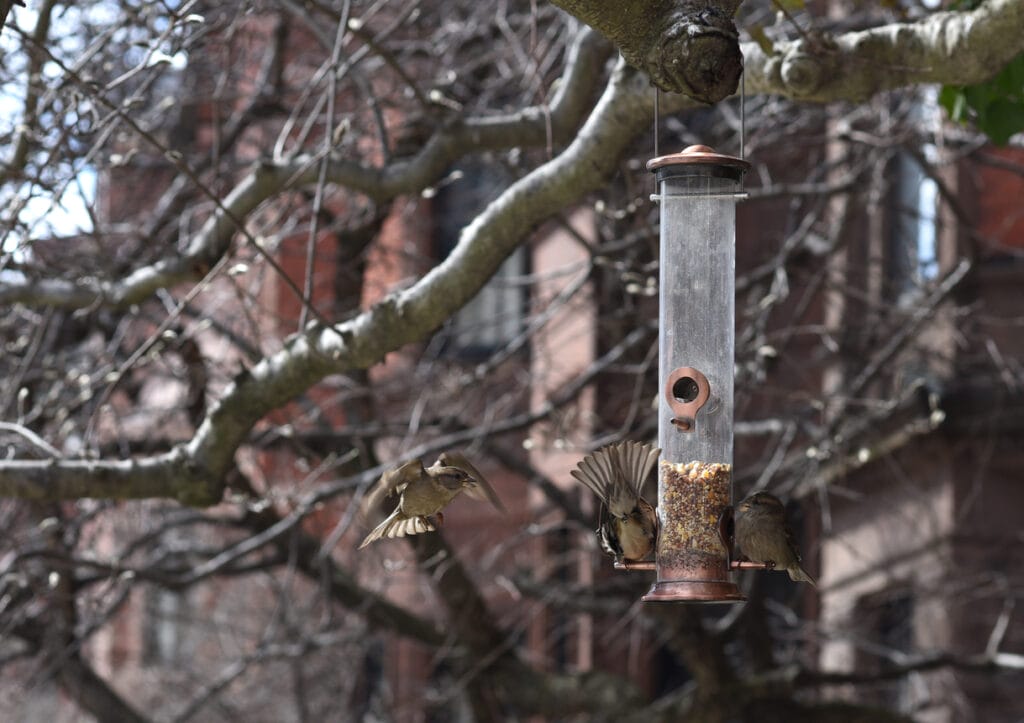
These seeds are slightly smaller than sunflower seeds and are entirely white in color. Although they’re mostly used in bird seed mixes, they can also be used on their own to feed a variety of birds. They provide a high percentage of fat, protein, and carbs.
Birds that prefer eating safflower seeds are:
- Blue jays
- Chickadees
- Titmice
- Red-bellied and Downy Woodpeckers
- Mourning Doves
- Northern Cardinals
- Black-headed Grosbeaks
However, not all birds prefer this seed due to its bitter taste, examples of these birds are grackle and blackbirds. Squirrels are also not so fond of safflower seeds, which makes them a nice addition to mix in with other seeds to ward them off.
We recommend mixing it in with other types of seeds gradually till the birds get used to it, then you can fill the entire tube feeder with it.
Safflower seeds are best added to tube feeders with adjustable ports or mesh tubes.
4. Peanuts
Peanuts are best suited for medium to large birds and are high in both protein and fats. You can either serve them shelled or without the shell. Examples of birds that prefer this crunchy option are:
- Chickadees
- Titmice
- Woodpeckers
- Scrub-jays
- Nuthatches
Bear in mind that these are also a squirrel favorite. Unless you’re opting to feed the furry creatures, it’s best to opt for a caged tube feeder. If you don’t mind them sharing the birds’ meal, you can opt for a regular, mesh tube feeder.
Should I Stick to One Type of Bird Seed

This depends on two factors, the first being the type of tube feeder you already own, and the birds you wish to attract or ward off.
Some tube feeders have small ports or openings that are difficult for birds with larger beaks to get into, while some have adjustable ports. Other tube feeders are made out of cages that can hold bigger seeds such as sunflower seeds or even peanuts.
Author Note: If you’d like to cater to a variety of birds, you can get a triple tube feeder. This type of feeder is made up of three tubes that can be filled separately.
Most birds prefer sunflower seeds (black-oil seeds in particular) and peanuts. Most seed mixes contain these two, along with millet and milo, which aren’t necessarily bird favorites, but they’re mostly used as fillers. While you can add them to the mix, most birds tend to pick their favorites out of the mix and toss other seeds aside.
Bottom line is, seed mixes are great if you’re looking to attract a variety of birds, but be prepared for the mess they might make while going through their seed buffet.
What to Look for in Bird Seed
When shopping for bird seeds, there are a few factors to consider to make sure you’re picking the best seeds.
- Look for signs of stale or spoiled seeds. This includes dust and debris in the packaging or signs of mold or insects within the seeds.
- Read the ingredient list. Not only will this tell you the proportions of the seeds and what’s in the mix, but it’ll also let you know if there are any pesticides or insecticides that might harm the birds.
- Avoid seed blends full of fillers. Grains, oats, milo, and cracked corn are among the lesser ingredients that some mixes add as fillers.
- If you’re feeding birds regularly, consider buying in bulk. This will save you some cash and give you multiple refills before your next visit. For extra savings, try to shop during bulk sales.
How Often Should I Refill Tube Feeders?

Depending on the type of seeds you’re using and how hungry the flocks that visit your feeders are, you could refill the tube feeder a couple of times a day.
Wild birds can live without a refill, but if you leave the feeder empty for more than a couple of days, they’ll disregard the feeder as a source of feed and may fly elsewhere to fill their bellies.
Try to stick to a regular filling schedule. Adding multiple feeders can be used to stagger the feeding times so you don’t have to worry about one feeder running out.
Author Note: Another reason for refill can be spoilage. Wet seeds and shells should be replaced at once and replaced with fresh seeds.
To reduce the time between each refill, consider anti-pest feeders. Pests include squirrels, mice, raccoons, and any unwelcome bully birds. Tube feeders are available in caged forms, and some are weight-sensitive, closing or spinning when heavier guests grab onto them.
How Often Should I Clean The Tube Feeders?
Tube feeders should be cleaned at least four times a year. If you notice any sick birds, the feeder should be taken down and cleaned thoroughly to avoid spreading the illness or replaced altogether.
Conclusion
Whichever birds frequent your backyard, rest assured that there is a seed variety out there for them, as well as a suitable tube feeder.
Tube feeders are convenient and come in many shapes and sizes that can hold an assortment of seeds, or even a specific type of seed.
We recommend providing your feathery guests with a mix of seeds to cater to different breeds while avoiding fillers like grains and milo.
As long as your feeders are full on the regular, you don’t have to worry about flocks heading elsewhere. Just remember to pick a tube feeder and seed type that won’t invite any unwanted visitors. We hope you enjoyed this article on the best bird seed for tube feeders.
Fly high friends!
FAQ
Depending on where you live, you may need to invest in a squirrel proof feeder. Check the Audubon website for the best options.
https://www.audubon.org/audubon-bird-houses-bird-feeders-accessories
Otherwise, any feeder that has several layers of perches and is robust enough to withstand the weather and birds jumping on it.
You should hang your feeder somewhere with shade and that is safe from predators. Close to some shrubbery and/or trees is good because it gives the bird a place to fly to if they feel threatened. And of course, it needs to be in a location where you can see it!
You can make a temporary and replaceable feeder simply by using the tube out of the center of a kitchen towel roll. Cover it with peanut butter and then roll it in a mixture of seeds. Hang it up and wait but don’t let it go moldy. It is a great craft project for kids.




